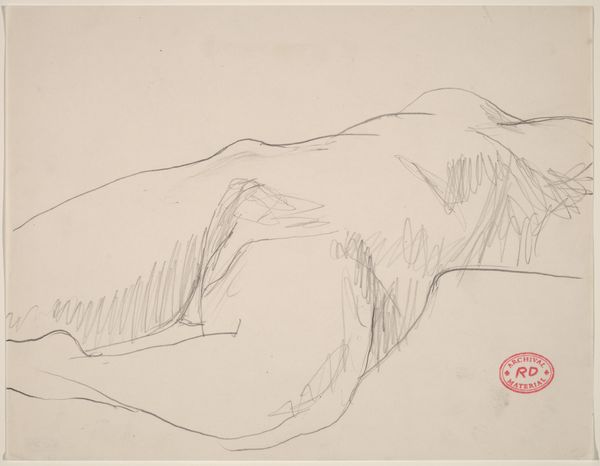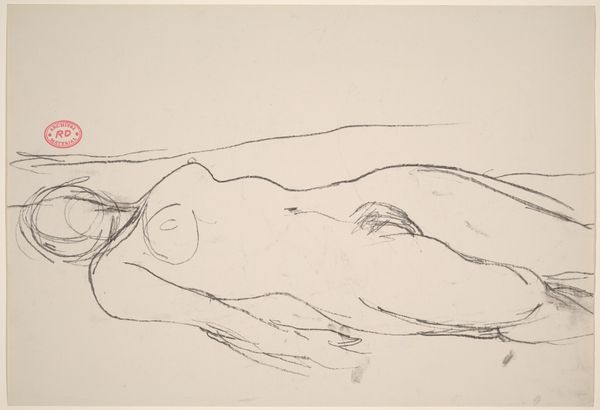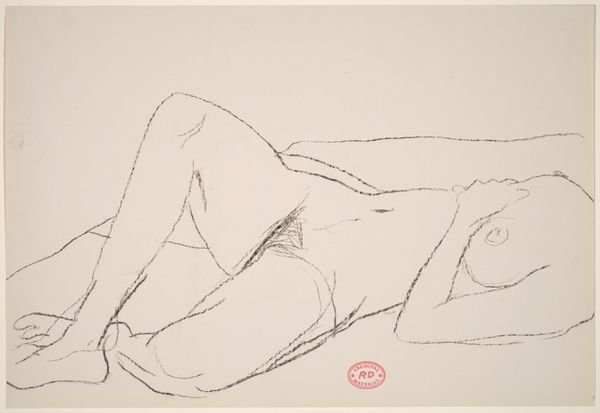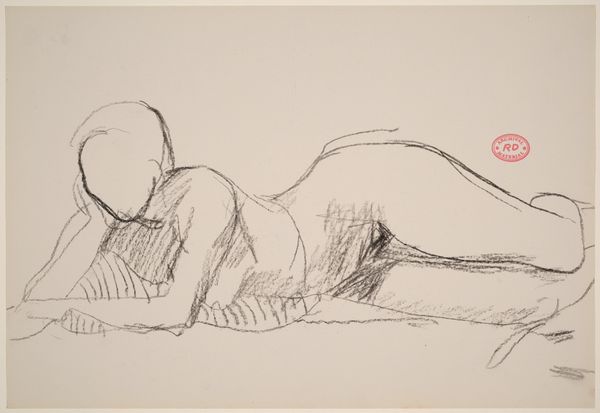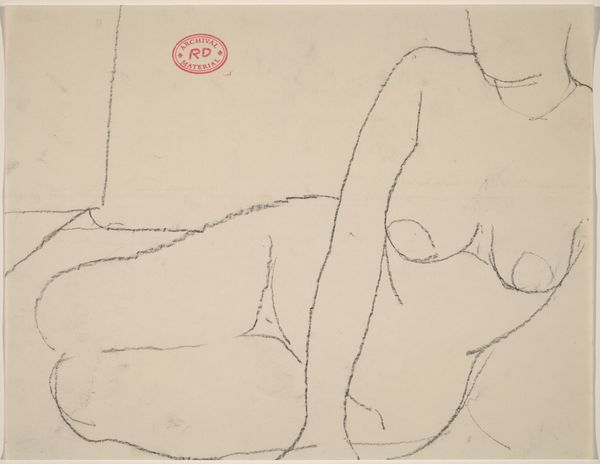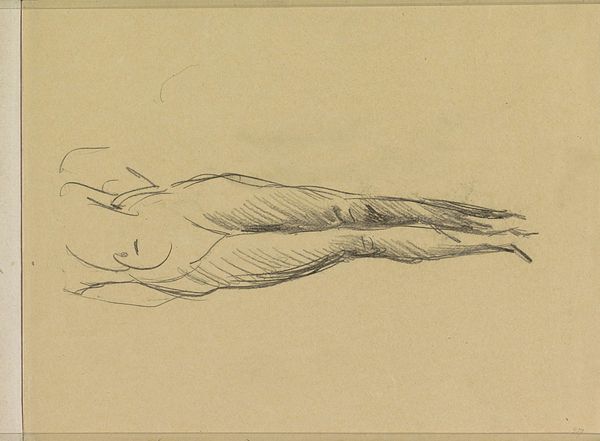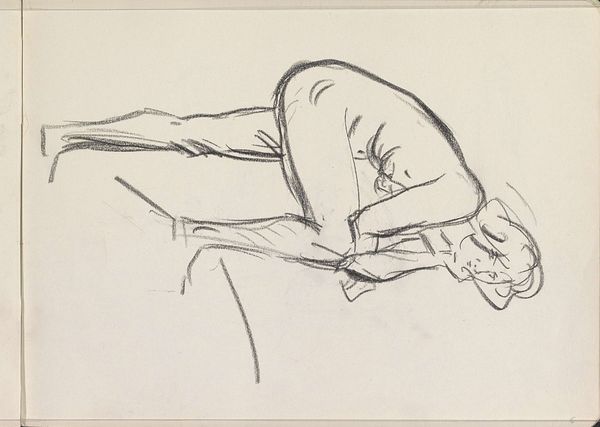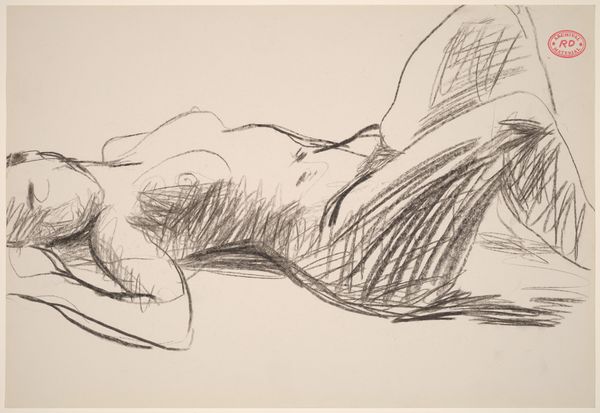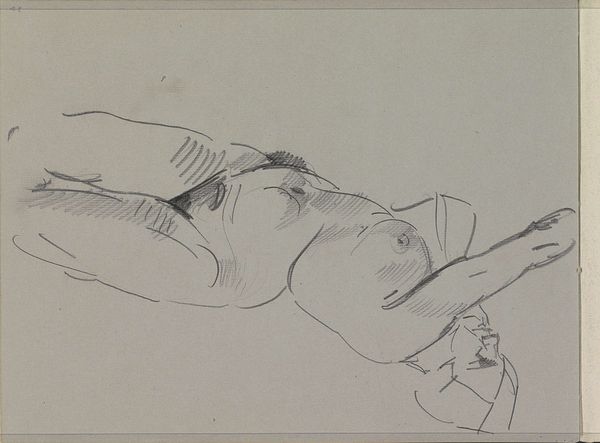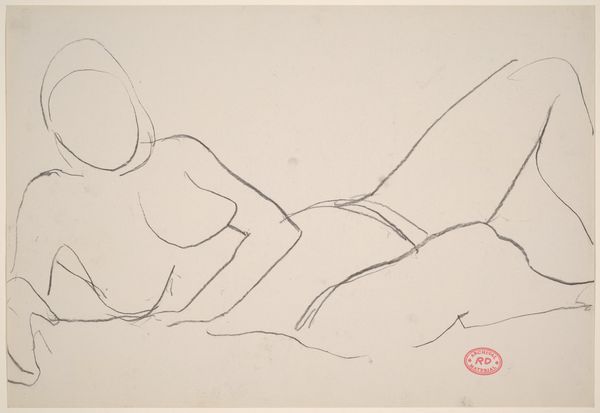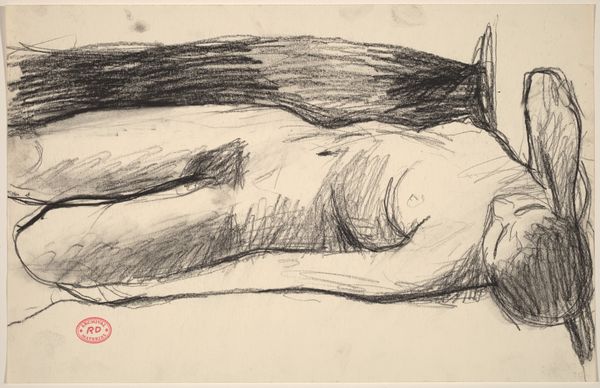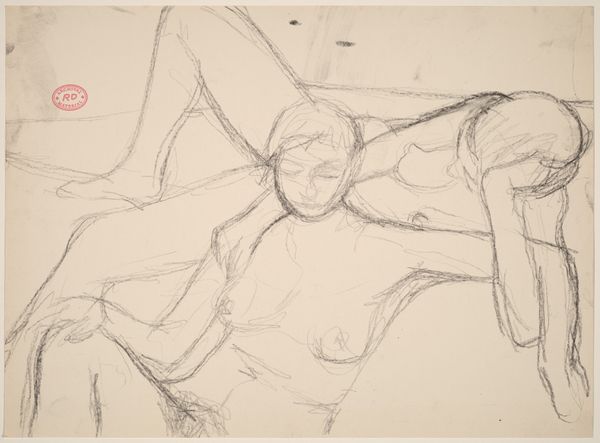![Untitled [reclining female nude with head on pillow] by Richard Diebenkorn](/_next/image?url=https%3A%2F%2Fd2w8kbdekdi1gv.cloudfront.net%2FeyJidWNrZXQiOiAiYXJ0ZXJhLWltYWdlcy1idWNrZXQiLCAia2V5IjogImFydHdvcmtzL2U0OGUyM2RkLWYyYzEtNDNhMi04NzVjLWQ5YjhlYjIzYTJkNy9lNDhlMjNkZC1mMmMxLTQzYTItODc1Yy1kOWI4ZWIyM2EyZDdfZnVsbC5qcGciLCAiZWRpdHMiOiB7InJlc2l6ZSI6IHsid2lkdGgiOiAxOTIwLCAiaGVpZ2h0IjogMTkyMCwgImZpdCI6ICJpbnNpZGUifX19&w=3840&q=75)
Untitled [reclining female nude with head on pillow] 1955 - 1967
0:00
0:00
drawing, graphite
#
abstract-expressionism
#
drawing
#
ink drawing
#
figuration
#
bay-area-figurative-movement
#
graphite
#
nude
Dimensions: overall: 27.9 x 40.6 cm (11 x 16 in.)
Copyright: National Gallery of Art: CC0 1.0
Editor: Here we have Richard Diebenkorn's "Untitled [reclining female nude with head on pillow]", created sometime between 1955 and 1967, a graphite and ink drawing. There’s a rawness to it, almost unfinished, which I find intriguing. What stands out to you in this work? Curator: It's precisely that sense of incompleteness, as you call it, that pulls me in. We see Abstract Expressionism moving beyond its heroic phase, questioning the grand narratives of male genius that dominated the art world. Diebenkorn offers a fragmented vision of the body. Do you think it reflects any historical anxieties or transformations? Editor: Possibly the shifting representation of the female body, or perhaps a reflection on personal anxieties around representation itself. Curator: Exactly. Look at the years. Post-war America was deeply invested in specific images of domesticity and femininity, yet artists like Diebenkorn were wrestling with abstraction and challenging traditional modes. It suggests a society grappling with evolving ideals and disillusionment with traditional norms. Editor: The lines are very direct. Was it intended for public display? Curator: Good question. Consider that it remained untitled and was done on paper with humble material. That might indicate a study or perhaps an exploration that wasn’t necessarily meant for a gallery setting, but for a more intimate viewing. A gesture perhaps against the prevailing market pressures of the time. What do you think of the composition? Editor: I'm struck by how the figure seems almost lost in the blank space, as though disappearing. Curator: The negative space is crucial. Diebenkorn used it to emphasize the precariousness of representation. We’re left with an unfinished story, which might tell us a lot about the societal uncertainty and shifting identity markers of the era. Editor: So, what seems like a quick sketch opens up questions about representation and its role during a time of social transformation. Curator: Precisely! Art serves as a visual record of its era, a reflection of the tensions and the negotiations of identity and values of any given moment in history.
Comments
No comments
Be the first to comment and join the conversation on the ultimate creative platform.
